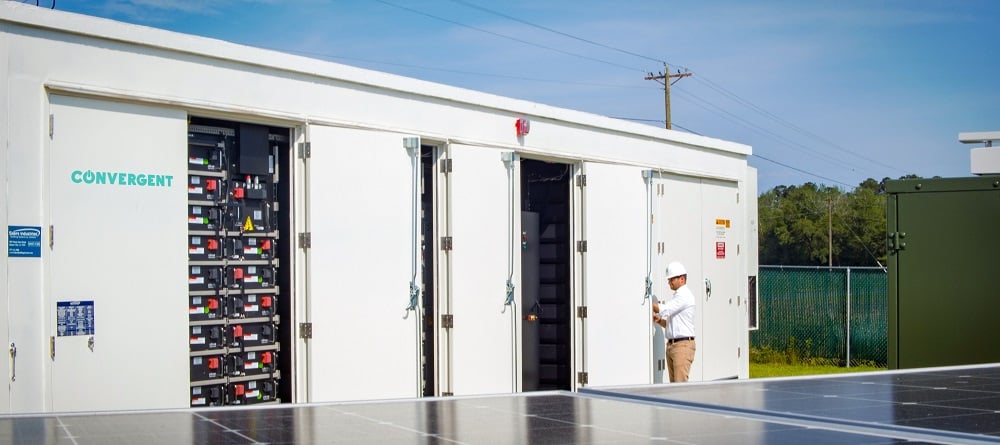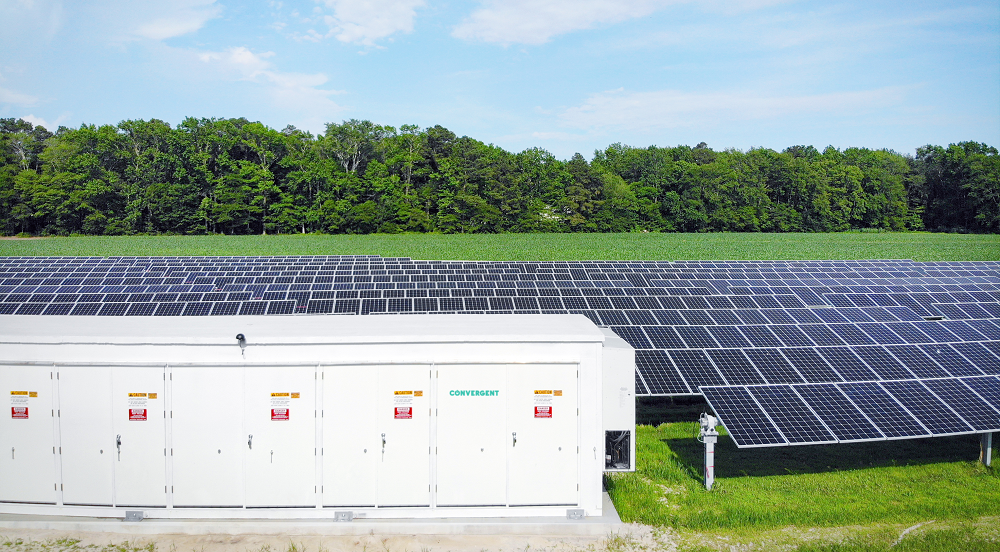How Texas Businesses Can Insulate Against Energy Price Volatility With On-Site Renewables

The Challenges Facing Texas’s Electric Grid … and Energy Costs
Texas’s grid operator, the Electric Reliability Council of Texas (ERCOT), is expected to top its all-time peak usage record this summer. The previous peak, 85,508 MW, was on August 10th, 2023. For reference, 1 MW can power ~800 homes on a typical day but as few as 250 on a hot (peak) summer day in Texas. The surge in electricity demand during grid peaks can directly influence energy prices.
Texas’s electric grid faces multiple challenges, including extreme weather events, capacity shortfalls (due to increased demand), intermittent large-scale renewable generation, and unplanned generator downtime. These challenges result in higher energy price volatility for customers.
As we know, the Gulf Coast region of the United States frequently faces the impact of tropical cyclones, hurricanes, heatwaves, and other extreme weather events, which can lead to significant disruptions in electricity. An extreme example in ERCOT is Winter Storm Uri in 2021. Extreme weather events are on the rise, posing a potential threat to individuals and businesses relying on the grid.

ERCOT is already dealing with the impact of extreme weather, which poses operational challenges and contributes to volatile energy costs as summers get hotter and winters get colder. ERCOT is more vulnerable to these events because it is independent and unlike the rest of the country, which is connected to a larger grid.
In this blog post, we will cover what’s behind the energy price volatility in ERCOT and how on-site renewable energy resources—including battery storage and solar photovoltaics (PV)—can help businesses reduce the impact of these price fluctuations and increase reliability in the face of future interruptions.
What’s Driving Texas’s Energy Price Volatility?
There are three primary factors contributing to ERCOT’s energy price volatility. According to Electricity Plans’ “Texas Electric Rates – Market Trends and Price Forecast 2024” the primary drivers are:
📈 Capacity Shortfalls and Increased Demand: Texas has faced capacity shortfalls due to a nearly 20% surge in electricity demand over the past five years, driven by factors such as population growth, industrial expansion, and climatic conditions. This surge in demand has not been met with a proportional increase in supply, partially due to the absence of a capacity market. As expected, these capacity shortfalls contribute to price volatility in the electricity market.
⛈️ Weather Patterns and Unforced Generator Outages: Texas experiences various weather extremes, from intense heatwaves in the summer to increasingly intense cold fronts in winter. These events lead to spikes in electricity demand for cooling and heating, straining supply during peak hours. Severe weather like hurricanes can disrupt power infrastructure, causing supply disruptions and price spikes. Additionally, unforced generator outages contribute to supply challenges and price fluctuations.
⚡ Shift in Energy Mix / Intermittent Resources: The increased volume of wind and solar energy in ERCOT has driven down wholesale electricity prices! However, delivery fees associated with transmitting renewable energy may offset some of these savings, impacting overall price dynamics. Further, because wind and solar are intermittent (only producing energy when the wind is blowing or the sun is shining), availability may not align with the times energy is most in demand.
In addition to these three factors, grid congestion and curtailment risks are an increasing challenge for clean power developers in Texas and other high-growth markets and could impact price volatility going forward.
Unless there is significant development in infrastructure—and a rapid increase in the amount of energy storage on the grid—rolling blackouts and partial outages run the risk of becoming a new normal and the cost of energy will continue to experience extreme price volatility.
How On-Site Renewables Can Insulate Businesses in ERCOT
The challenges facing ERCOT are being felt by customers, especially those customers who use the most energy. For Texas businesses looking to insulate themselves against volatile energy costs—or hedge against future cost increases—energy storage is a hassle-free solution.
What makes energy storage—most often in the form of battery storage— the “Swiss Army knife” of solutions is its ability to store energy when it’s not needed (or there is a surplus) for when it is needed most (typically the hottest hours of the hottest days of the year). These hours, often referred to as “grid peaks,” are often the basis of allocating system costs.

One strategy to mitigate these costs is through reducing consumption during the four coincident peaks (4CP), utilized by ERCOT to allocate transmission system costs to distribution utilities. By linking transmission costs to peak load percentage, the 4CP mechanism incentivizes companies to reduce consumption during peak periods, thereby potentially lowering their share of transmission costs in the subsequent year. This is frequently referred to as “peak shaving.”
The installation of an on-site battery energy storage system can help reduce transmission demand charges by reducing your facility’s consumption during the 4CP hours. Additionally, the battery can perform energy arbitrage when real-time prices are high.
A leading provider of energy storage solutions in North America, Convergent Energy and Power (Convergent) charges its battery storage systems when the grid is not constrained, and energy is at its cheapest (typically at night); we discharge the battery storage system when energy is most expensive, and most in-demand based on real-time prices. This can save businesses around seven figures per year and cut carbon emissions, without curtailing operations.
Solar PV can also be installed on-site at an energy-intensive business where there is available land to do so. Solar provides a hedge against future supply cost increases, shields customers from periodic high prices during the summer, and passively reduces consumption during 4CP hours.
When paired with solar, battery storage systems can also maximize the value of solar PV, known as solar-plus-storage. With solar-plus-storage, the battery storage system is charged with solar energy. Then, it can be discharged onto the grid whether or not the sun is shining. In addition to reducing energy costs, solar-plus-storage provides a hedge against future cost increases (both supply and transmission).

Plan Ahead, Hedge Against Future Energy Price Volatility, and Connect with Convergent.
If your business is considering a battery storage or solar-plus-storage solution to help meet your hedge against current and future energy price volatility, lower your energy bill, insulate against short-term power quality concerns or increase your renewable energy usage, you are in good company. Businesses like Shell, Ford, and National Grid have done just that with a development partner (spoiler alert: that partner is Convergent).
For over a decade, Convergent has gained deep expertise by working closely with industrial businesses to take the hassle out of on-site renewable solutions by building, owning, and operating systems on our customers’ behalf. Once again, we finance the system, so there is no interruption to operations and no CapEx required on the part of our customers.
If you’re looking to future-proof your facility with an on-site battery storage or solar-plus-storage system, schedule a free, no-obligation introductory call with our team today.





